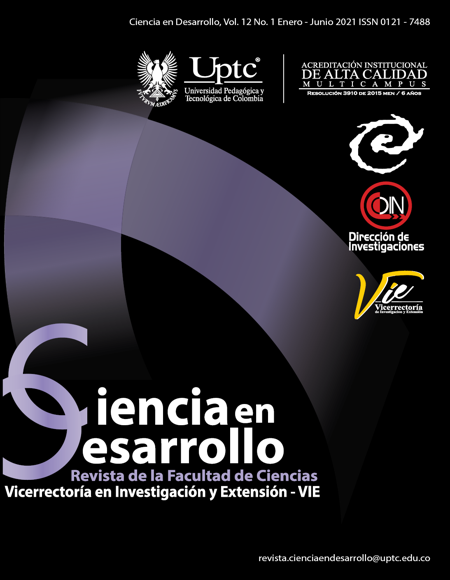Identification of a synchronous generator parameters using recursive least squares and Kalman filter

Abstract
The comparison between recursive least squares (RLS) and Kalman filter (KF) is presented in this paper, both methods were adequate to estimate six parameters of a synchronous machine. The work focused on finding the operating conditions which the quality of the identification achieved with Kalman filter is better than recursive least squares.A linear model of the machine is used in order to considerate the currents and their derivatives as the system inputs while the three-phase voltage signals are the outputs. Furthermore two experiments with simulated and measured data were carried out, three operating scenarios and two variations of the algorithms respectively were considered. Despite the great similarity and good performance of both methods, it was found that Kalman filter slightly exceeded least squares due to the fact that it presented smaller oscillations in the estimated value of the parameters for any operating condition.
Keywords
Identification, Dynamic Model, Kalman Filter, Recursive least squares.
Author Biography
Diego Alberto Bravo Montenegro
Profesor Titular Departamento de Física (Universidad del Cauca). Ingeniero Físico (2003), Esp. en Automatización Industrial (2007), Magíster en Ingeniería Automática (2012). Dr en Ciencias de la Electrónica (2016).
References
[1] “Recommended practice for excitation sys- tem models for power system stability studies,” 2005.
[2] “Guide for synchronous generator modeling practices and applications in power system stability analyses,” 2002.
[3] P. Kou, J. Zhou, C. Wang, H. Xiao, H. Zhang, and C. Li, “Parameters identification of nonlinear state space model of synchronous generator,” Engineering Applications of Artificial Intelligence, vol. 24, no. 7, p. 1227 – 1237, 2011.
[4] H. B. Karayaka, A. Keyhani, G. Thomas, B. Agrawal, and D. Selin, “Synchronous generator model identification and parameter estimation from operating data,” IEEE Transactions on energy conversion, vol. 18, 2003.
[5] E. Mouni, S. Tnani, and G. Champenois, “Synchronous generator modelling and parameters estimation using least squares method,” Simulation Modelling Practice and Theory, vol. 16, 2008.
[6] M. Arjona, C. Hernandez, M. Cisneros, and R. Escarela-Perez, “Estimation of synchronous generator parameters using the stands- till step-voltage test and a hybrid genetic algorithm,” International Journal of ElectricalPower & Energy Systems, vol. 35, 2011.
[7] M. Huang, W. Li, and W. Yan, “Estimating parameters of synchronous generators using square-root unscented kalman filter,” Elec- tric Power Systems Research, vol. 80, no. 9, p. 1137 – 1144, 2010.
[8] M. Dehghani, M. Karraria, W. Rosehartb, and O. Malikb, “Synchronous machine model pa- rameters estimation by a time-domain identifi- cation method,” International Journal of Electrical Power & Energy Systems, vol. 32, 2010.
[9] M. Hasni, S. Djema, O. Touhami, R. Ibtiouen, M. Fadel, and S. Caux, “Synchronous machine parameter identification in frequency and time domain,” Serbian Journal Of Electrical Engeneering, vol. 4, 2007.
[10] A. Saavedra, J. Ramirez, O. Malik, and C. Ra- mos, “Identification of excitation systems with the generator online,” Electric Power Systems Research, vol. 87, 2012.
[11] B. Mogharbel, L. Fan, and Z. Miao, “Least squares estimation-based synchronous generator parameter estimation using pmu data,” in IEEE Power & Energy Society General Meeting, 2015.
[12] L. Fan and Y. Wehbe, “Extended kalman fil- tering based real-time dynamic state and pa- rameter estimation using pmu data,” Electric Power Systems Research, vol. 103, p. 168 – 177, 2013.
[13] H. Aghamolki, Z. Miao, L. Fan, W. Jeing, and D. Manjure, “Identification of synchronous generator model with frequency control using unscented kalman filter,” Electric Power Systems Research, vol. 126, p. 11, 2015.
[14] A. Saavedra, J. Ramirez, and O. Malik, “Methodology to estimate parameters of an excitation system based on experimental conditions,” Electric Power Systems Research, vol. 81, 2011.
[15] H. Botero and J. Ramires, “Identification of excitacion systems: Detailed analysis of met- hodology and results,” DYNA, vol. 75, 2008.
[16] J. Niño, H. Díaz, and A. Olarte, “Estimación de parámetros de generadores sincronicos usan- do mediciones fasoriales y el filtro de kalman unsceted,” XVI Congreso Latinoamericano de Control Automático, CLCA 2014, 2014.
[17] K. EI Naggar, “Estimation of synchronous machine parameters using new discrete time- filtering algorithm,” Electric Power Systems Research, vol. 39, pp. 123–128, 1996.
[18] R. Bhaskar, M. Crow, E. Ludwig, K. T. Erick- son, and K. Shah, “Nonlinear parameter estimation of excitation systems,” IEEE Transactions on Power Systems, vol. 15, 2000.
[19] E. Da Costa and J. A. Jardim, “Synchronous machines parameters identification using load rejection test data,” IEEE Transactions on Energy Conversion, vol. 17, 2002.
[20] E. Ghahremani and I. Kamwa, “Dynamic state estimation in power system by applying the extended kalman filter with unknown inputs to phasor measurements,” IEEE Transactions Power Systems, vol. 26, pp. 2556–2566, 2011.
[21] A. Saavedra, C. Ramos, and J. Ramirez, “A systematic review on identification of excitation systems for synchronous generators,” EIA, pp. 33–48, 2012.
